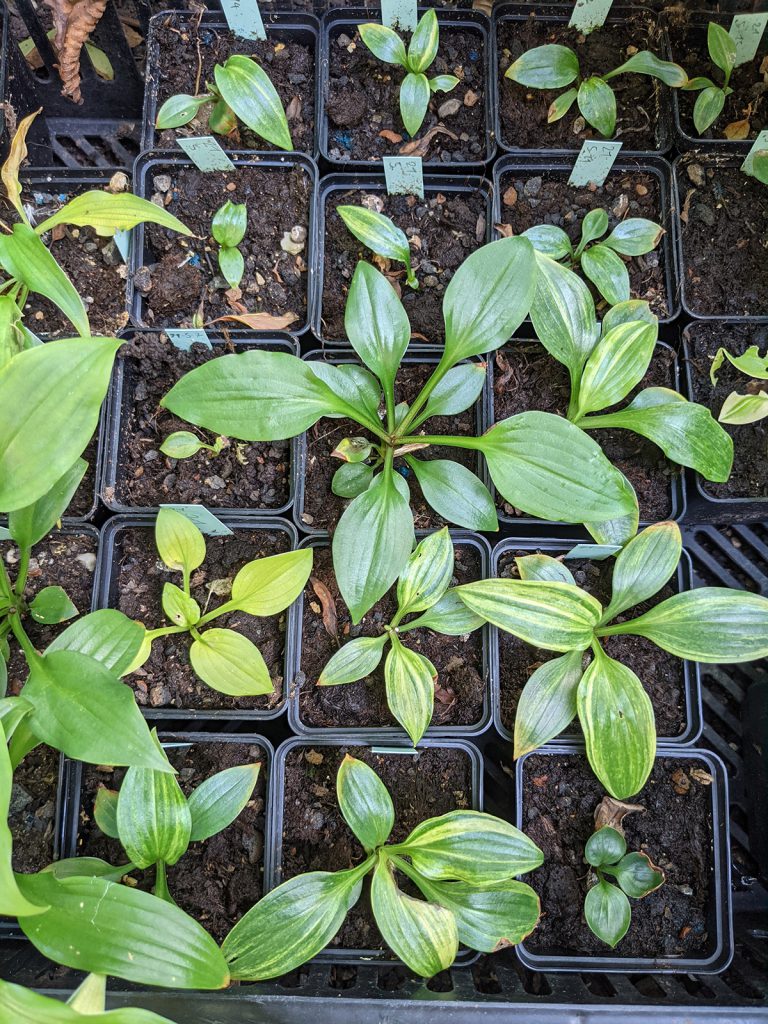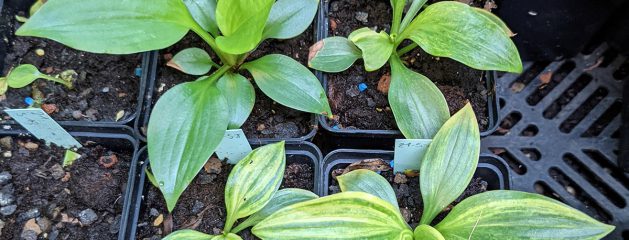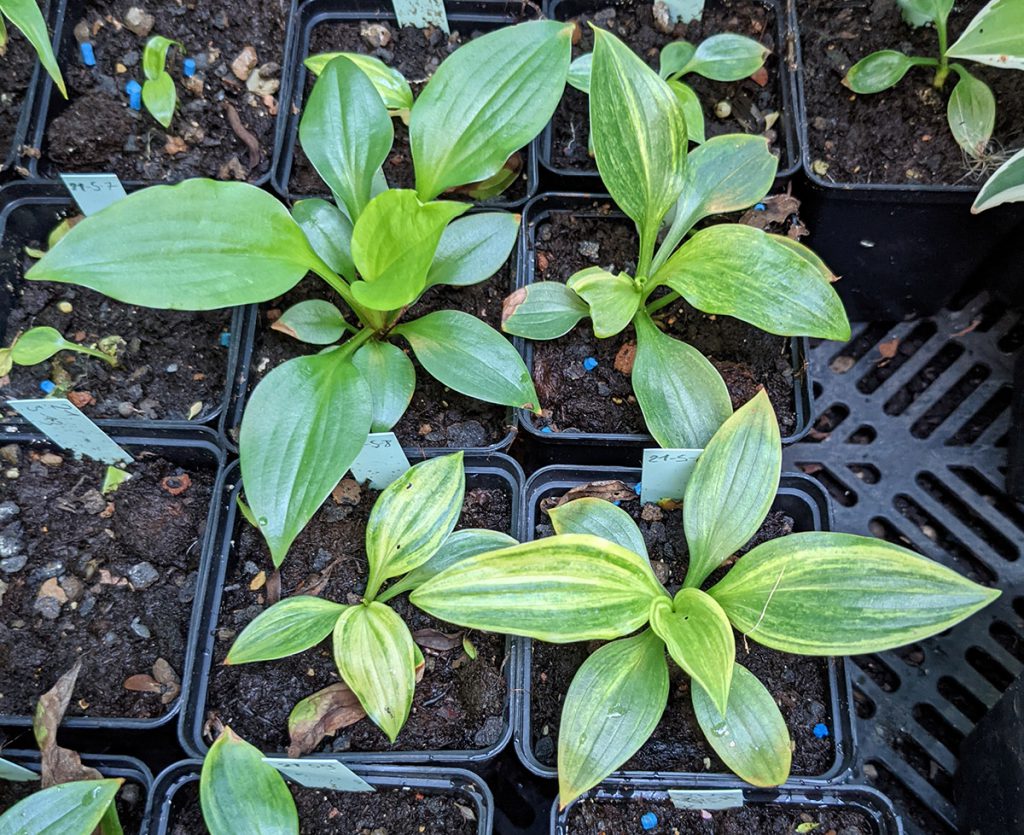
In January 2022, author Sebastian Seibold graciously offered to share his experiences growing hostas from seed while researching a thesis on the history and methodology of breeding hostas for ornamental garden use, and we are delighted to share his story with you.
In my first year of training as a perennial gardener (vocational training in Germany usually lasts three years), I encountered my love for ornamental-leaf plants showing variegation, especially in the shady areas of the garden. So, it was only a matter of time until I got bitten by the hosta bug. Some years later, my hosta collection still expanding, I was facing the end of my studies in horticulture and was looking for a topic for my bachelor’s thesis. My professor, knowing about my hosta obsession, suggested that I write about the history and methods of hosta breeding.
So, in December 2020 I took a deep dive into Hostadom (the world of hostas) and came across so many nice folks who were willing to support my thesis project. During my research, I discovered the seed sale of Duluth Hosta at the very end of the selling season. Researching and writing about the breeding of my favorite plants filled me with regret over neglecting to keep some open-pollinated seed from my own hosta collection that year, and so I was curious to get at least some seed to grow in the wintertime.
Matt, from Duluth Hosta, responded in no time to my inquiry about sending some seeds to Germany. If I remember correctly, it was in the mid of January when the seeds arrived. So now I was a proud owner of seeds from ‘Chirifu Oba‘, ‘Maui Buttercups‘, ‘Twilight Time‘, ‘Bold Ribbons‘ and Hosta kiyosumiensis. They were top quality, clean seeds, had proper packaging, and even more than I expected! I loved it!
I purchased Samla boxes from Ikea, with a height of 5.5 inches, to be used as little greenhouses and drilled some holes in the lids for gas exchange. I sowed the seed in little trays, meticulously labeled, in an appropriate soil mix, and put my Ikea-greenhouse under some LED lights, approximately 30 watts.
And the fun began.
During the weeks that followed, while I was writing my thesis, I had the pleasure of watching so many different plants emerge and develop.
‘Chirifu Oba‘, the only streaker I was able to purchase, produced between 1/3 and 1/2 of streaked or at least variegated progeny, with interesting leaf structures and different growth rates. ‘Maui Buttercups‘ hasn’t had that high germination rate but produced at least one very promising seedling.
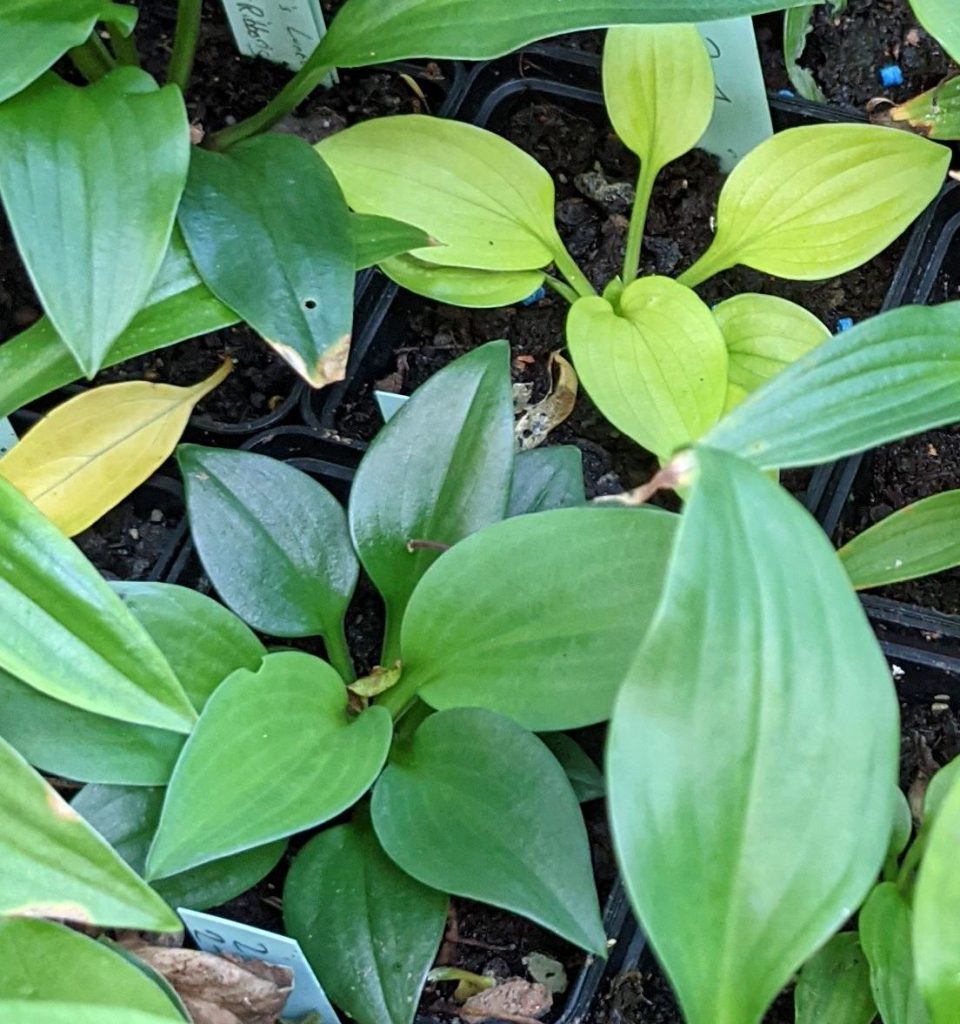
H. kiyosumiensis seedlings showed some red spots in the petioles. ‘Twilight-Time‘ showed interesting leaf formations with some seedlings showing a great growth rate. Regarding the speed of growth, one seedling from ‘Bold Ribbons‘ really stood out. While the mean of the seedlings was showing their second or third leaf, this seedling already had eight to ten small leaves developed.
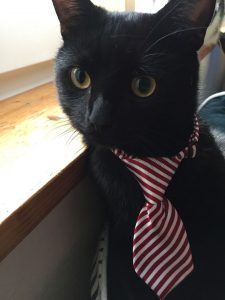
With transplantation to quick-pot-trays the first selection took place, as well as the successive reduction of the humidity level and ultimately exposure to room-level conditions. Around this time, the first seedling got named. The one ‘Bold-Ribbon’-seedling, which was developing faster than any other seedling, was called ‘Lunas’ Lunch’ after my young tomcat Lunas was trying to make his own ‘selection’ on the seedlings. Lucky enough I caught Lunas early in his meal, and he had to leave his lunch halfway through the seedling. So ‘Lunas’ Lunch’ was able to recover and grew on as if nothing has happened.
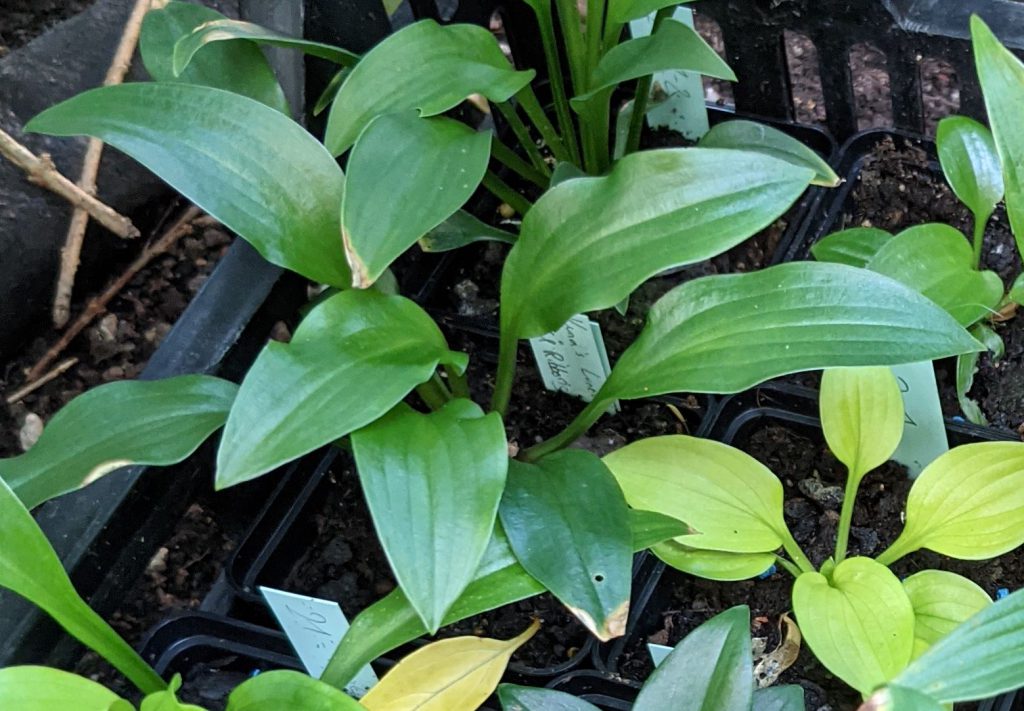
No Regrets
With the completion of my thesis on hosta breeding in March 2021, I graduated as a Bachelor of Science in Horticulture from the University of Applied Sciences Weihenstephan, which is located near Munich in southern Germany. From spring to fall 2021 I expanded my knowledge of trees in a tree-nursery nearby, and by October 2021 I started my advanced studies in Agricultural Biosciences.
Overall, my first foray into raising hostas from seed was fun and a joyful experience. My expectations were exceeded, and I got some promising progeny to work on in the future. I wanted to share the most interesting seedlings in September 2021, after they were potted up before heading to the garden.
– Sebastian Seibold
